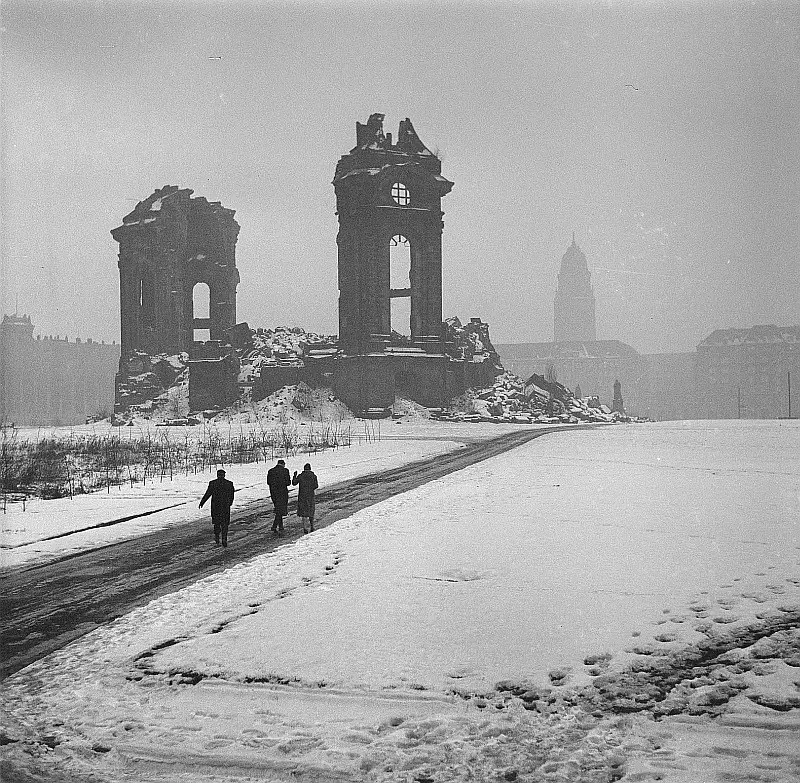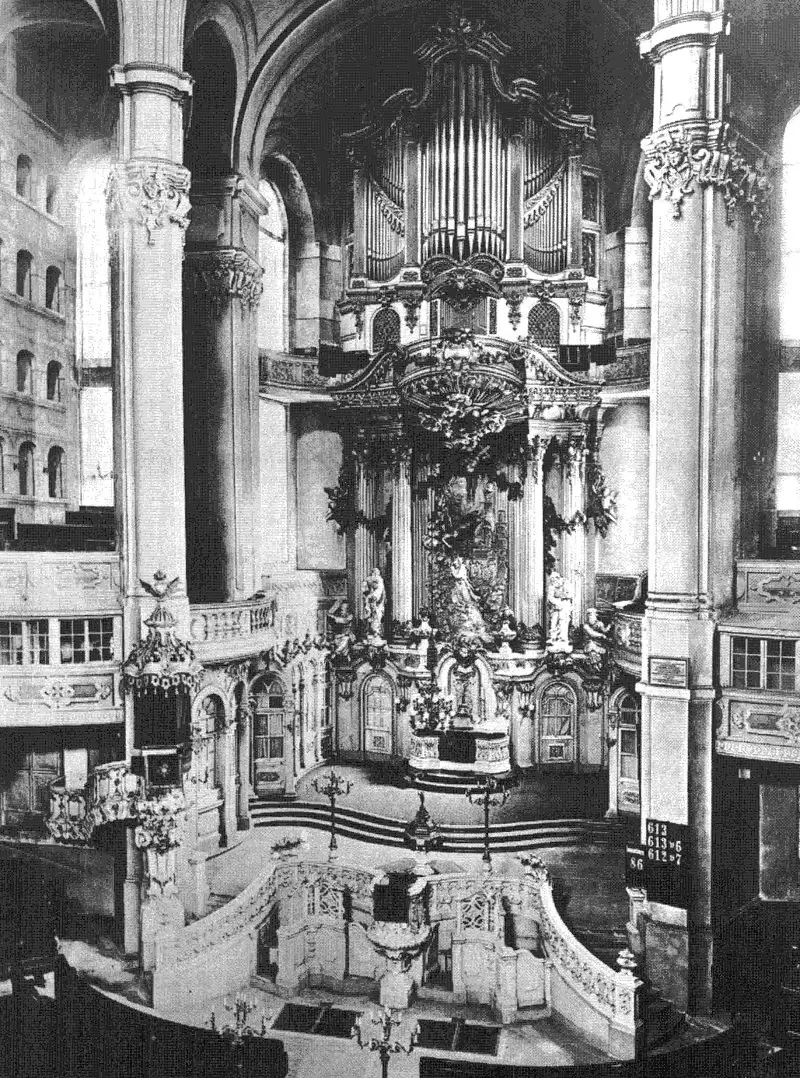Dresden Frauenkirche is a historic church located in the city of Dresden in Germany. The church, built in the 18th century, suffered heavy damage and was destroyed during World War II. However, after Germany's reunification, a campaign was launched to rebuild the church. This campaign received great attention worldwide and Dresden Frauenkirche was reopened in 2005.
The reconstruction of the church was not only an architectural success, but also a symbolic rebirth. By being rebuilt after the destruction of the war, Dresden Frauenkirche symbolized people's hopes and resilience. The reopening of the church also reflected the unity and strength of Germany after reunification.
The rebirth of Dresden Frauenkirche became an important symbol not only for Germany, but also for the world. The reconstruction of the church showed that people should not lose hope even after the destruction of war. It also showed that people can come together to accomplish great projects.
The rebirth of Dresden Frauenkirche created a timeless aesthetic. The reconstruction of the church is a magnificent architectural achievement and reflects people's determination to preserve their historical and cultural heritage. Therefore, the rebirth of Dresden Frauenkirche is not only the reconstruction of a church, but also a symbol of people's hopes and resilience.
The History and Rebirth of the Dresden Frauenkirche

Dresden Frauenkirche is a historic church located in the city of Dresden, Germany. Built in the 18th century, the church is one of the most important examples of Baroque architecture. However, during World War II, the city of Dresden was heavily bombed and the church was damaged. The dome of the church collapsed, the walls were destroyed, and only a ruined structure remained.
However, the rebirth of Dresden Frauenkirche occurred after the reunification of Germany. Restoration work, which began in the 1990s, was completed in 2005 and the church was reopened. During the restoration work, the church's original materials were used and architectural details were rebuilt to their original state.
The rebirth of Dresden Frauenkirche is not only the reconstruction of a church, but also a symbol of an important event in Germany's history. The reconstruction of the church reflects the spirit of unity and solidarity that emerged after Germany's reunification. The reopening of the church has also increased the tourism potential of Dresden and made a significant contribution to Germany's cultural heritage.
The rebirth of Dresden Frauenkirche is also an important example of the preservation and restoration of historic buildings. The preservation of historic buildings is important for passing on the traces of the past to future generations. The rebirth of Dresden Frauenkirche has also been an inspiration for the preservation and restoration of historic buildings.
In conclusion, the history and rebirth of Dresden Frauenkirche have an important place in Germany's history. The reconstruction of the church reflects the spirit of unity and solidarity that emerged after Germany's reunification. Additionally, the reopening of the church serves as an example of the preservation and restoration of historic buildings. Dresden Frauenkirche has made a significant contribution to Germany's cultural heritage and increased the tourism potential of Dresden.
Reconstruction After Destruction: The Story of Dresden Frauenkirche

Dresden Frauenkirche is a historic church located in the city of Dresden in Germany. The church, built in the 18th century, was completely destroyed as a result of air raids during World War II in 1945. However, the reconstruction efforts carried out after the destruction of the church allowed it to be revived as a symbolic structure of Dresden.
The reconstruction of the church began in the early 1990s and was completed in 2005. The reconstruction work was carried out in accordance with the original design of the building. The interior and exterior of the church were rebuilt using original materials. The reconstruction work was financed by donations from many parts of Germany.
The reconstruction of Dresden Frauenkirche not only revived a structure, but also contributed to the preservation of Dresden's historical and cultural heritage. The church is considered a symbolic structure of Dresden and attracts tourists. The reconstruction of the church played an important role in the reconstruction process of Dresden and contributed to the city's revival.
The reconstruction of Dresden Frauenkirche demonstrates people's determination to preserve their historical and cultural heritage. The reconstruction after the destruction revived people's hopes and faith in the future. The story of Dresden Frauenkirche reminds people that they should not lose hope even when faced with difficulties.
Restoration of the Dresden Frauenkirche: The Convergence of Art and Engineering

Dresden Frauenkirche is a historic church located in the city of Dresden in Germany. The church, built in the 18th century, suffered heavy damage and was destroyed during World War II. However, thanks to a restoration project that began in the 1990s, the church was rebuilt and opened in 2005. This restoration project is one of the most beautiful examples of the intersection of art and engineering.
The restoration project was carried out by experts from many different disciplines. Art historians, architects, engineers, and other experts came together to understand the original structure and design of the church. This allowed all the necessary information for the reconstruction of the church to be gathered.
During the restoration process, it was important to remain faithful to the original structure of the church. The materials used to rebuild the church were selected to be as similar as possible to the original materials. Additionally, the original design and decorations of the church were recreated.
The restoration project was not only limited to the reconstruction of the church. It was also an important step in preserving the church for the future. During the restoration process, the durability and safety of the church were also taken into consideration. This minimized the risk of future damage to the church.
The restoration of Dresden Frauenkirche is one of the most beautiful examples of art and engineering coming together to rebuild a historic structure. This project is an important step in preserving historic buildings and passing them on to future generations. Additionally, this project serves as an example of what art and engineering can achieve when they come together.
A Timeless Heritage: The Rebirth of Dresden Frauenkirche

Dresden Frauenkirche is a historic church located in the city of Dresden in Germany. The church, built in the 18th century, was completely destroyed as a result of bombing during World War II in 1945. After the destruction, the church was left as a monument on its ruins and became a symbol over the years.
However, in the 1990s, during the reconstruction of Dresden, the idea of rebuilding the church was proposed. This idea caused many debates and some argued that the ruins of the church should be preserved. However, eventually the decision was made to rebuild the church.
The rebuilding process was quite long and challenging. First, the ruins had to be cleared. Then, many research and work were done to rebuild the church according to its original plans. The rebuilding process began in 1994 and was completed in 2005.
The rebuilt church looks very similar to the original. The interior and exterior of the church were restored according to its original design. The rebuilding of the church was an important step in the reconstruction of Dresden and helped to preserve the city's historical heritage.
The rebuilding of Dresden Frauenkirche became not only a reconstruction of a church, but also a symbol of humanity's resilience and hope. The rebuilding of the church demonstrated people's determination to preserve and revive their historical heritage. Therefore, the rebirth of Dresden Frauenkirche will be remembered as a timeless legacy.
The Rebirth of Dresden Frauenkirche: Its Historical and Cultural Importance

Dresden Frauenkirche is a church located in the city of Dresden in Germany, with historical and cultural significance. The church, built in the 18th century, was completely destroyed during the bombings of World War II in 1945. However, after Germany's reunification, a campaign was launched to rebuild the church, and work began in 1994.
The rebuilding process was long and challenging, as the church had to be reconstructed using its original design and materials. Therefore, the construction process took about 11 years and was completed in 2005. The rebuilt church was constructed faithfully to the original and preserved its historical and cultural significance.
The rebirth of Dresden Frauenkirche is one of the most important cultural events that occurred after Germany's reunification. The church is part of Germany's historical and cultural heritage, and its reconstruction is of great importance for the preservation of Germany's historical and cultural heritage.
In addition, the reconstruction of Dresden Frauenkirche is an example of how people can come together to work towards a common goal. When the campaign was launched to rebuild the church, people around the world made donations, and millions of dollars were raised for the reconstruction. This is an important example of how people can come together to preserve their cultural heritage and work towards a common goal.
In conclusion, the rebirth of Dresden Frauenkirche is of great importance for the preservation of Germany's historical and cultural heritage. The reconstruction of the church is an example of how people can come together to work towards a common goal. Dresden Frauenkirche is a structure with historical and cultural significance, and its reconstruction is a significant step towards the preservation of Germany's cultural heritage.

Comments